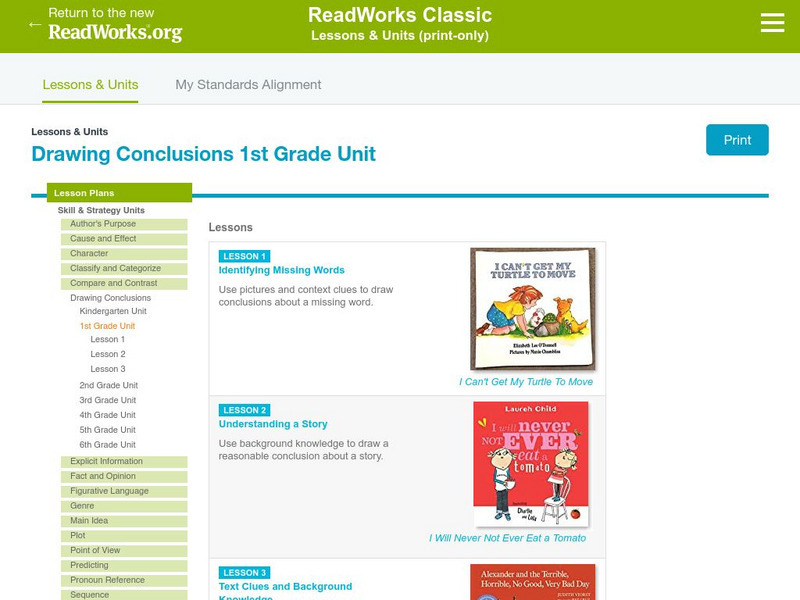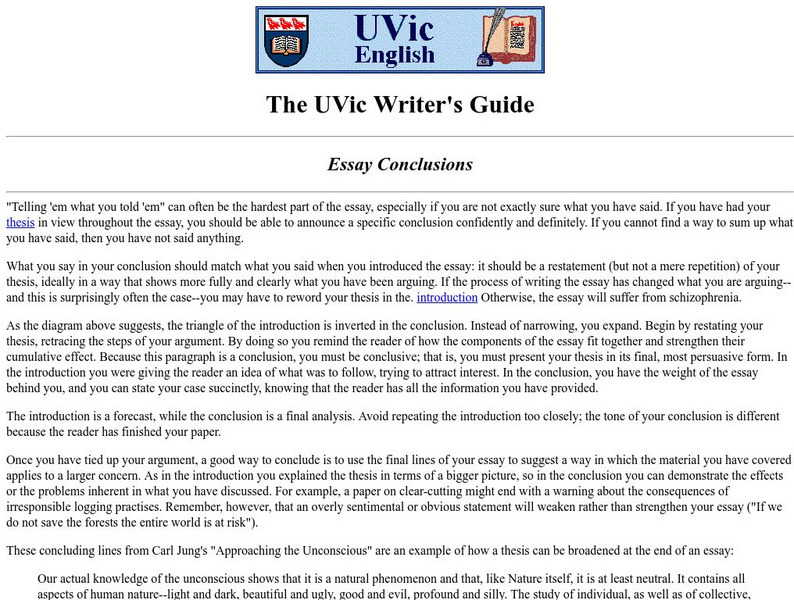University of Sydney (Australia)
The Write Site: Summary: Paraphrasing
This site provides a list of reminders about paraphrases. Then student will self-assess their own writings to ensure that they have properly used their paraphrases.
InterLink Language Centers
Interlink Language Centers: Reading Exercises Science
An interactive exercise for students to use while developing an understanding of how to read scientific informational texts. The text is presented one paragraph at a time and difficult vocabulary words are defined as footnotes. Then...
Grammarly
Grammarly Handbook: Body of the Text
This page explains how to write the body of the text from your outline (a link to "How to Write an Outline" is provided). The body must support the thesis and provide evidence and examples to support the thesis.
Grammarly
Grammarly Handbook: Introduction and Conclusion
Explanations and examples of writing introductions and conclusions.
Grammarly
Grammarly Handbook: The End
A list of text requirements that may be necessary after the conclusion of a research paper.
Grammarly
Grammarly Handbook: Evidence
This page focuses on the evidence to support points in an essay. Be sure you have enough support for each point and that the points are strong ones. It also suggests you double check both direct and indirect quotations in your paper to...
Other
Writing & Reading Success Center: Summarizing Paragraphs [Pdf]
An explanation and example of summarizing a paragraph, especially helpful for taking notes on texts.
ABCya
Ab Cya: Lilly, the Wild Cat Storybook ccss.ela
This resource provides a children's storybook for the classroom. Lilly, the Wild Cat, is an original work by Michelle Tocci. The story is about a cat who discovers that being a wild cat is not an easy life.
ABCya
Ab Cya: Marvin & Sweetie: Storybook
This resource presents its third children's storybook for the classroom. Marvin and Sweetie, is an original work by Michelle Tocci. The story is about a frog who learns an important life lesson from a friendly bird.
Other
Prezi: Inference Lesson 8th Grade
Learn what it means to make an inference by combining the author's clues and your background knowledge.
Read Works
Read Works: Dog Cage (Goulong)
[Free Registration/Login Required] This ReadWorks module contains a pair of informational texts from the Philadelphia Museum of Art that describe the dog cage of Emperor Qianlong and the reception hall from China's Palace of Duke Zhao...
Read Works
Read Works: Reception Hall From the Palace of Duke Zhao (Zhaogongfu)
[Free Registration/Login Required] This ReadWorks module contains a pair of informational texts from the Philadelphia Museum of Art that describe the reception hall from China's Palace of Duke Zhao (Zhaogonfu) and the dog cage of Emperor...
Read Works
Read Works: Grade 2: Four Lesson Unit: Drawing Conclusions
[Free Registration/Login Required] Designed to teach young scholars to identify the difference between explicit information and conclusions and to make text-to-self and text-to-text connections. Lessons are based on the provided text...
Read Works
Read Works: Drawing Conclusions 1st Grade Unit
[Free Registration/Login Required] A three-instructional activity unit on drawing conclusions through which students learn how to use pictures and context clues to discover a missing word and to draw conclusions about a story. Students...
Read Works
Read Works: Drawing Conclusions Kindergarten Unit: Short Story
[Free Registration/Login Required] A lesson plan teaching students to make conclusions based on a sentences and short texts. Students use textual cues to explain how the conclusions were reached. Ideas for direct teaching, guided...
Read Works
Read Works: Kindergarten: Three Lesson Unit: Drawing Conclusions
[Free Registration/Login Required] Three lessons designed to introduce young learners and beginning readers to the concept of drawing conclusions based on actions performed in a charades game, on verbal cues given in a guessing game, and...
Read Works
Read Works: Fourth Grade: One Lesson Unit: Drawing Conclusions
[Free Registration/Login Required] Learners are guided through a lesson plan to understand the difference between explicit information and conclusions drawn from a text. With free login, users have access to passages used in this lesson...
University of Victoria (Canada)
The U Vic Writer's Guide: Writing Essays: Essay Conclusions
Explains the purpose of the conclusion and how it relates to the thesis and introduction of the essay.
Other
Pennsylvania Doe: Lesson Plan: Making Inferences and Drawing Conclusions
In this activity the teacher uses modeling and questioning strategies to walk students through making inferences in various texts and then using those inferences to draw conclusions.
Other
Siu Edwardsville: Professional Development Center: Lesson Plan: Inference [Pdf]
Lesson teaching the use of word selection, context, structure, and specific references in making inferences within non-fiction texts.
Curated OER
Mc Graw Hill: Part 2 Reading: Informational Text: Reasons and Evidence in Text
An article discussing how authors use reasons and evidence to support their ideas in a text. Site includes an example to help students find reasons and evidence.
University of Ottawa (Canada)
University of Ottawa: Writing Paragraphs
This site from the University of Ottawa provides a wonderfully designed website that not only gives you exhaustive information on paragraph writing. Students will engage in starting with outlines, writing topic sentences, dividing their...
Polk Brothers Foundation Center for Urban Education at DePaul University
Depaul University: Center for Urban Education: I Can Explain an Inference [Pdf]
This tool can be used to help students articulate their answers about fiction pieces. Students will quote the text, provide an inference, and give a justification.



















